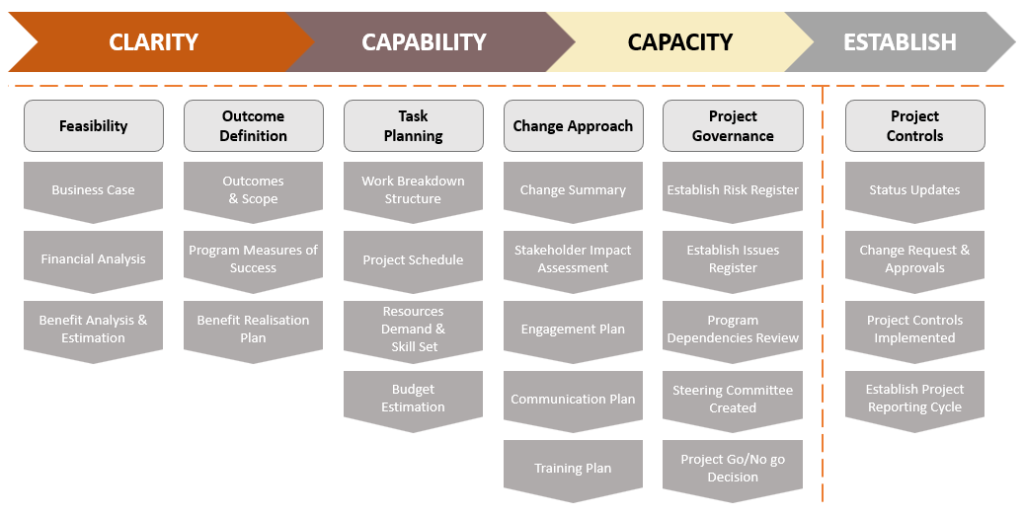
After you have agreed your project outcomes (see here), and you have clarity on what you are trying to achieve, let’s implement!
- Are you confident you have you have a clear pathway to enable delivery?
- Do you know what you need to do by when and in what sequence?
- Do you know if you have capacity and capability to implement and absorb the change?
- Do your people know what the project priority is relative to other tasks?
The project establishment phase is critical. The time spent on this and the depth of detail can be varied relative to the size, benefit and risk of the project; however, all elements should always be considered. If not considered it will likely result in extended delivery timelines, unnecessary changes to scope, challenging decisions, tension against competing priorities and additional unexpected costs.
More effort invested in the earlier project stages results in better outcomes and solutions, as it lays a strong foundation for the stages that follow. This enables the later stages of the project to be focused on guiding the implementation of the agreed solutions and resolving issues as they arise.
In the establishment phase, it’s important to consider and document the project plan, resourcing, financials, risks, issues and dependencies. Unfortunately, many leaders will skim over this step and dive headfirst into project task delivery, unwittingly sowing the seeds of project failure from the outset.
So do yourself a favour, and make sure you set your project up for success by doing a thorough project establishment, covering all the aspects in the image above.